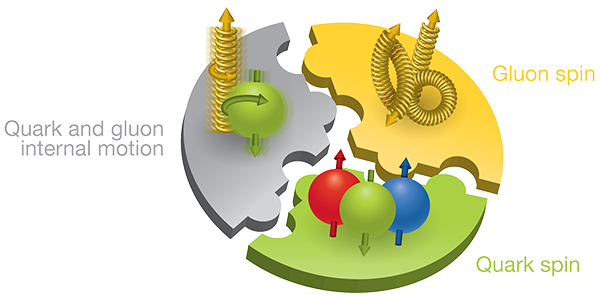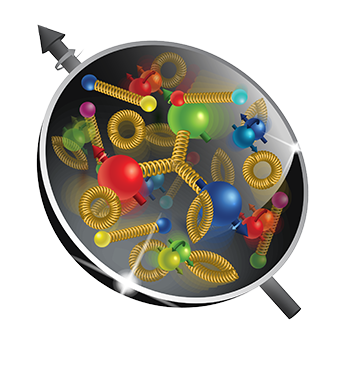Mission Overview
The Electron-Ion Collider will be a discovery machine for unlocking the secrets of the "glue" that binds the building blocks of visible matter in the universe.
Building Upon Discovery
Some experiments in nuclear physics let physicists “go back in time” to study matter as it existed in the very early universe. These experiments have revealed intriguing details of the “perfect liquid”—a primordial soup made of quarks and gluons, the particles that form the protons and neutrons in visible matter. These experiments have also given scientists a vague glimpse of the inner structure of protons as they exist today, including how their constituents contribute to their properties, as well as hints of other intriguing states of matter and new questions to explore.
For example, while we know protons are made of quarks and gluons, we know little about how these building blocks are arranged. And while protons, along with neutrons, make up the bulk of everything we see in the universe, their constituent quarks account for only a small fraction of their mass.
That means gluons—massless particles that generate the glue-like force field of the strong nuclear force that holds quarks together—could account for more than 90 percent of the mass of visible matter in the universe. The question is: how?
While existing nuclear physics facilities continue to provide important insight and fresh data—pushing the limits of discovery well beyond their initial designs—there is only so far they can go toward unlocking the inner workings of the building blocks of matter. The Electron-Ion Collider will be a novel tool for exploring this inner microcosm dominated by gluons.
The U.S. Nuclear Science Advisory Committee recommends the expeditious completion of the EIC as the highest priority for facility construction in its 2023 Long Range Plan.


Brookhaven National Lab's EIC Directorate coordinates with domestic and international partners to deliver the EIC construction project.
Brookhaven National Laboratory advances fundamental research in nuclear and particle physics to gain a deeper understanding of matter, energy, space, and time; applies photon sciences and nanomaterials research to energy challenges of critical importance to the nation; and performs cross-disciplinary research on climate change, sustainable energy, and Earth’s ecosystems.





